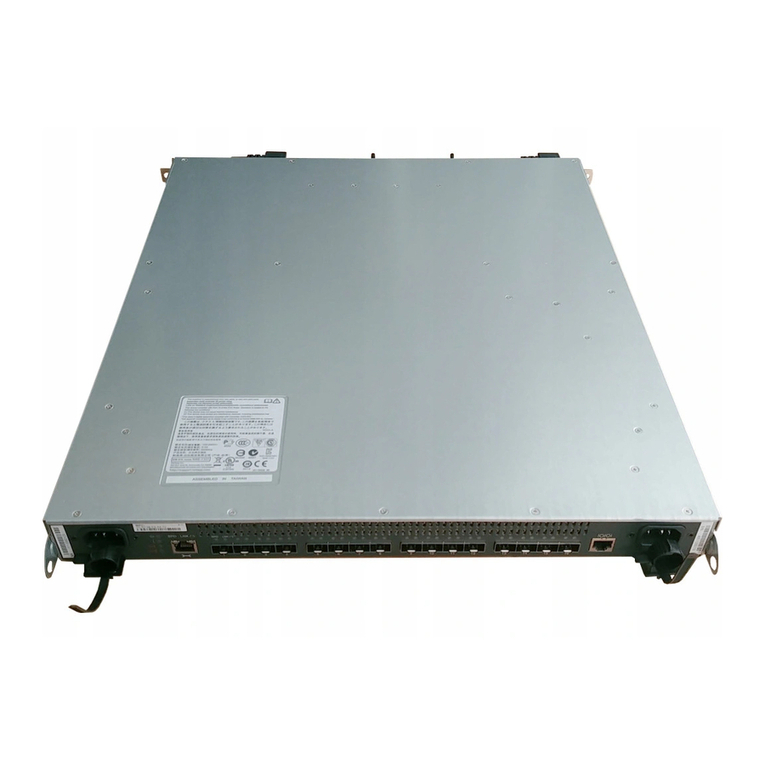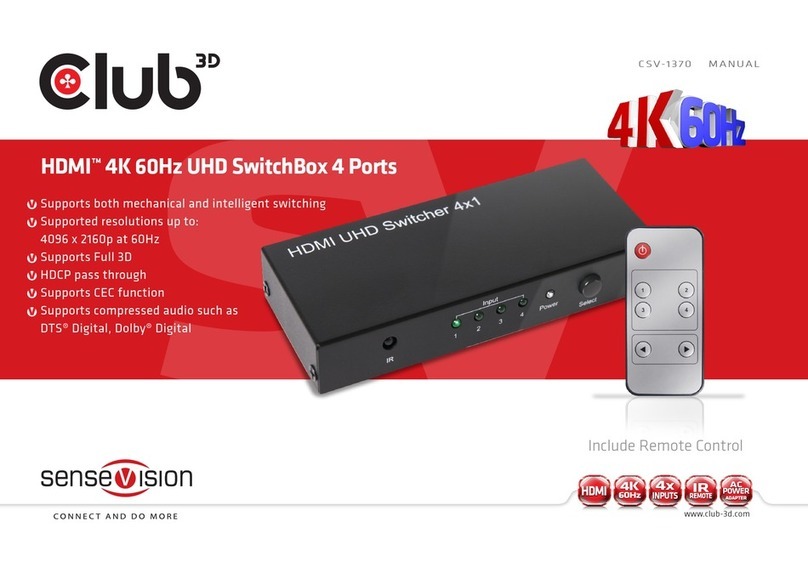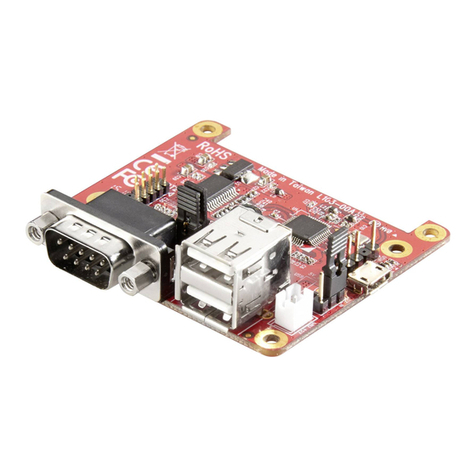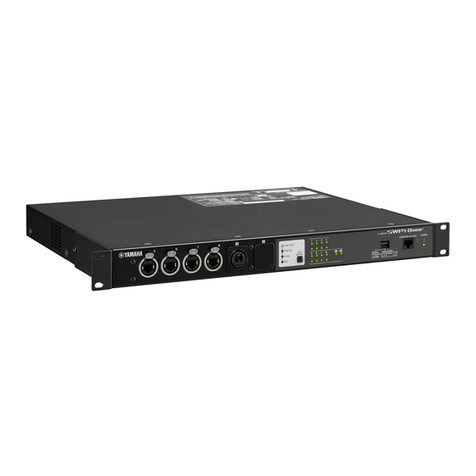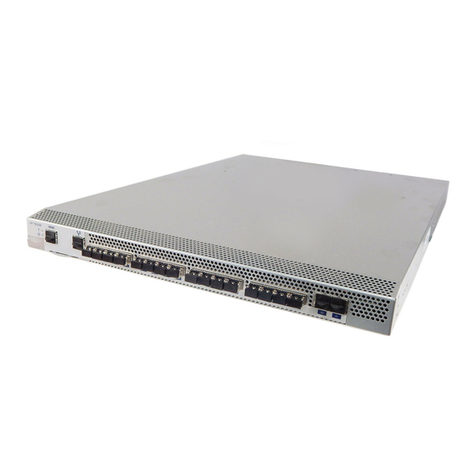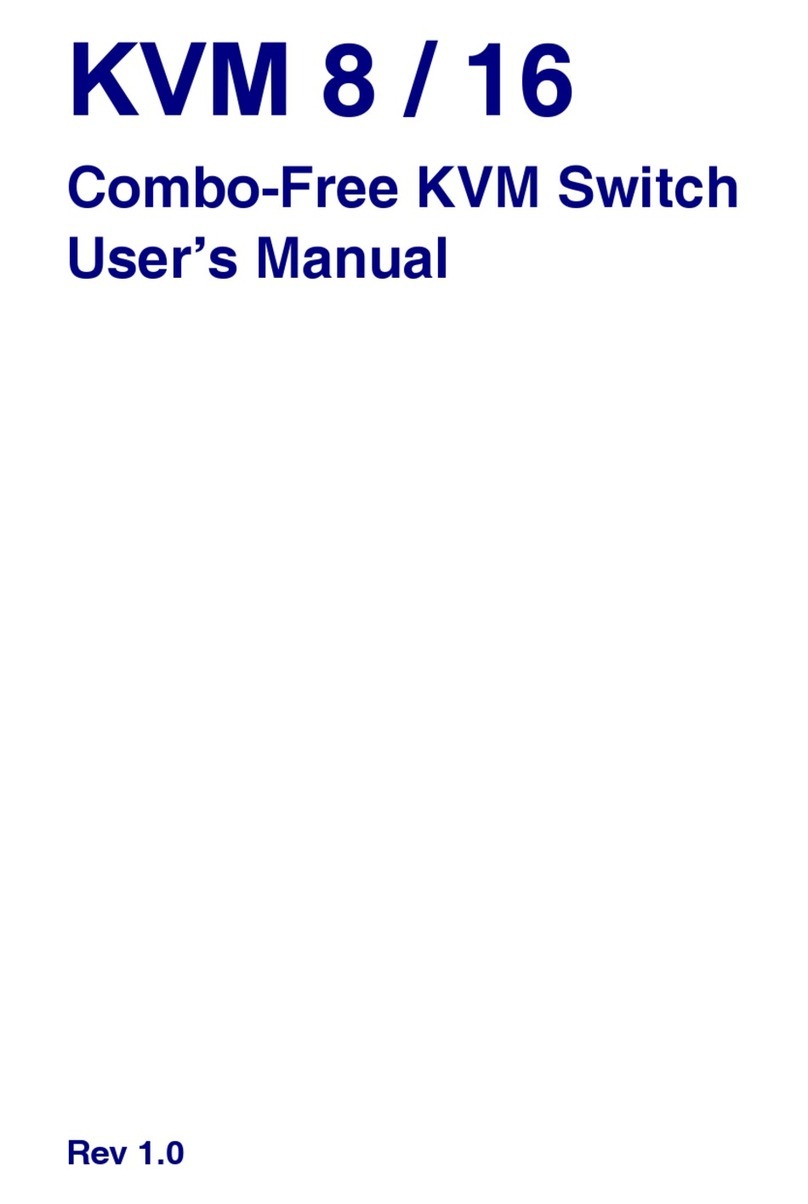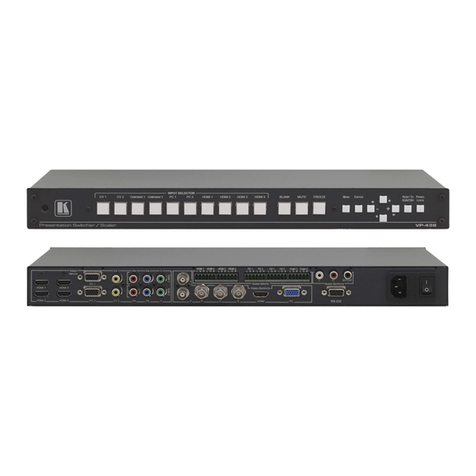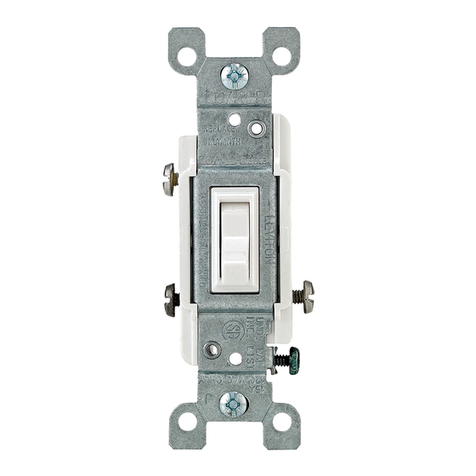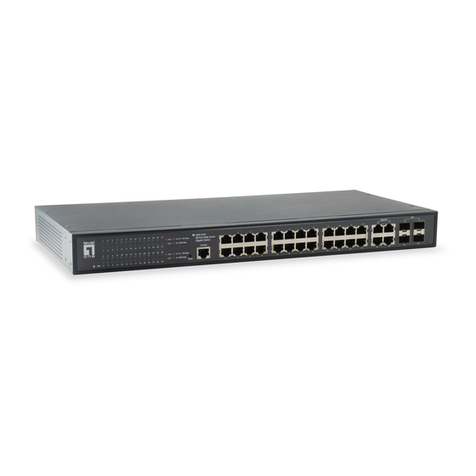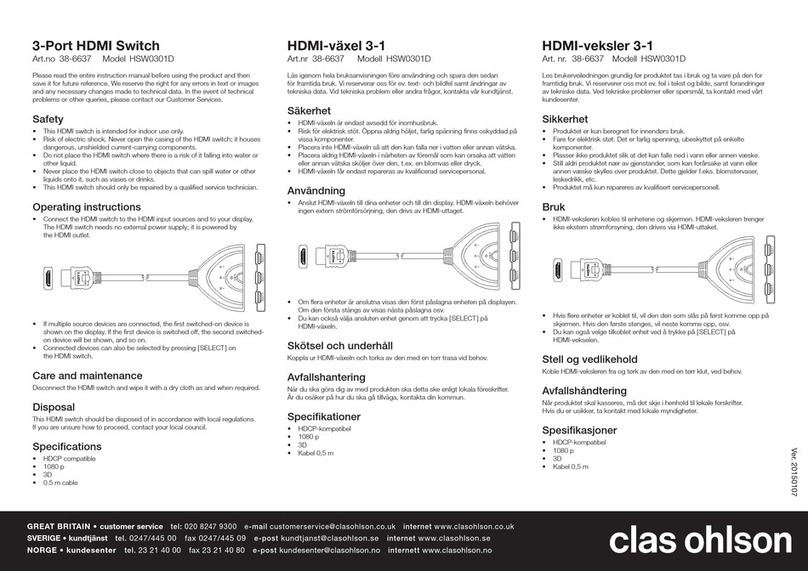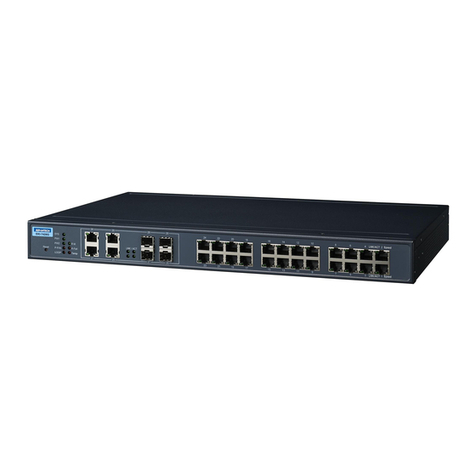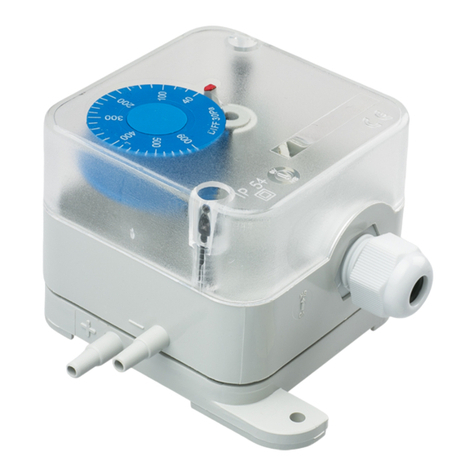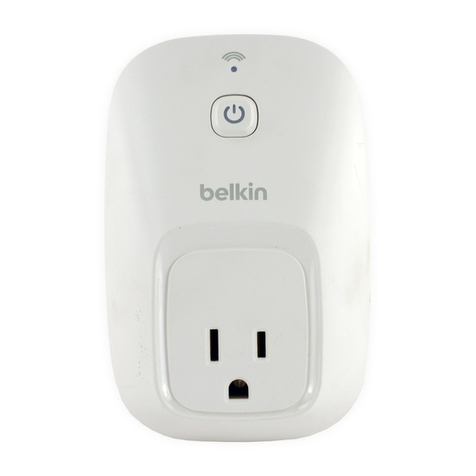Bome BomeBox User manual

BomeBox™ Quick Start Guide
The Bome Team thanks you for purchasing the BomeBox, a
versatile MIDI and network connection and translation box.
Register your BomeBox
lease take the time to register your BomeBox at the following
Internet URL:
https://www.bome.com/register
Registering will give you access to software, firmware updates
and notifications related to your BomeBox.
Importa nt Safet y Instr uctio ns
Before using the BomeBox, thoroughly read the following in-
structions for important information needed for setting up and
using your BomeBox safely. Keep this document in a safe place
for further reference.
WARNING
RISK OF ELECTRIC SHOCK
DO NOT O EN
This symbol is intended to alert you to the presence
of important operating and maintenance
instructions in the literature accompanying the
product.
This symbol is intended to alert you to the presence
of uninsulated dangerous voltage inside the
enclosure that may cause personal injury.
WARNING: To reduce the risk of fire or electric
shock, do not expose the device to rain, moisture,
dripping or splashing liquids. No objects filled with
liquids, such as drinking glasses, shall be placed on
the device.
CA TION: When using the device, make sure that
connected cables cannot cause a trip hazard
ᴑMake sure to understand and follow these instructions.
ᴑDo not expose the BomeBox to water or moisture.
ᴑOnly clean the BomeBox using a soft, dry cloth.
ᴑNever keep the BomeBox near any heat sources (e.g. radiat-
ors, stoves, amplifiers). Avoid direct exposure to sunlight.
ᴑAfter exposure to cold temperatures, let the BomeBox warm
up to room temperature before use.
ᴑBefore moving the BomeBox, remove all connected cables.
ᴑRefer all servicing to qualified personnel. Do not open the
BomeBox or attempt to disassemble or modify any internal
parts.
ᴑDo not use excessive force on buttons and connectors.
ᴑDo not place heavy objects on top of the BomeBox.
Power p!
There are multiple ways to power your BomeBox.
Micro- SB
The port marked USB Power allows you to use a stand-
ard micro USB cable to power the BomeBox.
Sources for Micro-USB power include:
ᴑa standard cell phone charger (at least 1.5A recommended)
ᴑa powered USB hub
ᴑa Micro USB cable connected to a computer
ᴑan external cell phone power battery pack
Note: the Micro-USB connector is used for power only. It does
not allow for data transfer between the BomeBox and a com-
puter or other USB host.
Power over Ethernet
With a ower over Ethernet ( oE) source
(e.g. a oE Ethernet Switch) you can power
the BomeBox via the Po In port.
Daisy Chaining
If your BomeBox is powered via oE, you can use the Po Out
connector to power another BomeBox. You can power up to 3
BomeBoxes by oE daisy chaining.
You can also use the USB type A port marked to power
one other BomeBox. Do not daisy chain more than one Bome-
Box via USB.
Powering SB Gear
The USB type A port provides a maximum of 1A
to connected devices. If connecting devices with a
sum of more than 1A, use a powered hub. If the
BomeBox is powered via the micro-USB connector from a
source with less than 1.3A, the USB connector will provide as
much as the incoming power source provides minus approx.
0.3A. When using oE, the USB A port always provides the full
1A.
Fir st Steps
For configuring your BomeBox for the first time, the easiest ap-
proach is to use WiFi to access the Web Config.
Default Password
By default, the Web Config's password is the serial number
from the sticker at the bottom of the BomeBox. The default
WiFi password is empty. We recommend to change both pass-
words.
WiFi
ress the WiFi button to enable the BomeBox wireless
LAN. Once the WiFi LED is on, you can use a laptop,
tablet, or smart phone to connect: select the SSID
“BomeBox”. In a web browser like Safari, Chrome, or
FireFox, enter “bomebox.box” or 192.168.153.1 in the ad-
dress bar to connect to the Web Config.
By default, WiFi is set up as a HotSpot (DHC server). Alternat-
ively, the Web Config allows you to set up WiFi as client for an
existing WiFi router, or as a WiFi access point, relaying the
wired Ethernet network.
Ethernet
The two Ethernet connectors on the BomeBox work as a 2-port
Ethernet switch: except for oE, it does not matter which one
you use for connecting. By default, the BomeBox Ethernet is
set up as DHC client for connecting it to an existing network
with DHC router. The network name is the box name, by de-
fault “BomeBox”.
In the Web Config, you can reconfigure the Ethernet ports to
act as DHC master to provide naming and I addresses to
other connected DHC clients – effectively replacing a router.
Last, but not least, for advanced users, you can set up the Eth-
ernet ports to use a fixed I address.
Give your BomeBox a Name
The first thing you should do is to name your BomeBox. When
using multiple BomeBoxes, you will only be able to connect
them if they have different names.
Change the Password
Once you have entered the Web Config, we recommend to
change the password. Otherwise it will be easy for anyone to
change the settings! It could even happen when you are per-
forming live. In the WiFi settings, specify a separate password
for the WiFi connection.
Web Config Settings
In the Web Config, you configure your BomeBox settings;
setup MIDI ports and MIDI routes; connect it to other Bome-
Boxes; and manage/start MIDI Translator ro projects to be
executed on the BomeBox.
MIDI C o nnections
MIDI DIN Ports
The BomeBox provides a standard MIDI DIN input and output
port, which can be routed to and from the other MIDI connec-
tions.
SB-MIDI Port
The USB type A connector marked allows you to plug in
and power your USB-MIDI gear. You can use a USB hub to con-
nect multiple USB-MIDI devices.
MIDI Routes
All available MIDI ports (MIDI DIN, plugged USB-MIDI devices,
Network MIDI) can be routed using the MIDI Router in the Web
Config. A route consists of a MIDI IN UT and a MIDI OUT UT.
Once saved, all MIDI data being received on that MIDI IN UT
port will be forwarded to the MIDI OUT UT port. This creates a
MIDI Thru connection, allowing you to merge and duplicate
MIDI streams.
By default, every MIDI port is routed to all other ports, except
to itself. You can save your current collection of routes as a
Route Set and load back such sets later on.

Network MIDI
The BomeBox implements its own Network MIDI protocol
(“NetMIDI”) for low latency and low jitter MIDI connectivity
from BomeBox to BomeBox (and, optionally, to connected
computers). It does not currently support RT -MIDI, but sup-
port is planned to be provided with a firmware update in the
future.
For setting up a NetMIDI connection, make sure the two Bome-
Boxes (A and B) are connected via Ethernet or WiFi, and that
they both have different names (BomeBox A and BomeBox B).
Then, go to the Network MIDI section in the Web Config of
BomeBox A and click on the Connect button next to the
name of BomeBox B. In order to approve the connec-
tion, press the blinking Pair button on BomeBox B. Al-
ternatively, you can approve the connection in the Web
Config of BomeBox B. Connections are maintained and
remembered until manually disconnected or canceled.
MIDI Trans la to r
For advanced users, you can load MIDI Translator ro project
files into the BomeBox on the MIDI Translator Configurations
page in the Web Config. All MIDI actions, Rules, timer actions,
and preset actions are executed exactly the same as MIDI
Translator ro running on a computer.
MIDI Aliases and ports are assigned by name. If a MIDI port
matches an existing port or alias on the BomeBox, it is used
directly. Otherwise, you can (and should) assign that alias on
the MIDI orts configuration to configure any un-assigned MIDI
Aliases.
In addition to any USB-MIDI devices plugged into the USB port,
the following MIDI ports and aliases are available on the Bome-
Box:
BomeBox DIN The physical MIDI DIN port (input and output)
Network 1 Auto-Alias for the first Network MIDI port
Network 2... Auto-Alias for the second Network MIDI port
USB 1 Auto-Alias for the first MIDI device connected
via USB
USB 2... Auto-Alias for the second MIDI device connec-
ted via USB
Network ports can also be accessed by name. A connection to a
BomeBox with name “My other BB” will auto-create a MIDI port
with name “My other BB”.
LE D's
Power This LED indicates that the BomeBox is on. It is
blinking during boot and during a firmware update.
Pair air LED on: at least one NetMIDI connection is es-
tablished. Blinking slowly: waiting for a remote host
to approve a connection (press to cancel). Blinking
fast: another NetMIDI host wants to connect to this
box (press to approve).
WiFi Indicates if WiFi is enabled. ress to enable or dis-
able. It is blinking when transitioning between
states.
PoE In The left LED indicates network activity. The right
LED indicates that is powered via oE.
PoE Out The left LED indicates network activity. The right
LED indicates that oE power is available for power-
ing another BomeBox.
MIDI IN This LED indicates incoming MIDI data.
MIDI O T This LED indicates outgoing MIDI data.
Tro ubles hoo tin g
ser Support Forums
In case of questions or problems please consult our support
team in the discussion forums:
http://www.bome.com/forums/
Advanced Configuration
The advanced configuration (link can be found at the very bot-
tom of the web config) will allow you to tune every aspect of
the network configuration of your BomeBox. lease use with
care, and only if you know what you are doing.
Network Reset
It's possible to misconfigure the BomeBox network setup and
entirely lose connectivity. If that happens to you, you can pre-
pare a USB thumb drive to reset the network settings. Copy an
arbitrary text file to the root folder of the thumb drive, and re-
name it to:
{serial}_network_reset.txt
where {serial} is the serial number of that BomeBox, as prin-
ted on the sticker at the bottom (e.g.: if the Serial Number of
your BomeBox is 00012345 then the name of the file would be
00012345_network_reset.txt). Now attach that prepared
thumb drive to the USB connector of the BomeBox and boot it.
It should reset the Ethernet and WiFi settings to factory de-
faults. Don't forget to unplug the thumb drive!
Password Reset
If you have forgotten your password for the Web Config, you
can reset it in a similar manner to resetting the network (see
previous paragraph) by creating a file with the following
scheme:
{serial}_password_reset.txt
Environm ental Infor m at ion
Disposal of the Product
This product is subject to the provisions of the
European directive 2002/96/EC. Should the pro-
duct become damaged beyond repair, or if you
wish to dispose of it, it must be disposed of sep-
arately from the municipal waste system via
designated collection facilities appointed by the
government or the local authorities. For coun-
tries outside of the European Union, observe the regulations of
your area and country that relate to the disposal of electronic
products.
RoHS Information
This product conforms, where applicable, to the European
Union's Directive 2002/95/EC on Restrictions of Hazardous
Substances (RoHS) as well as the following sections of Califor-
nia law which refer to RoHS, namely sections 25214.10,
25214.10.2, and 58012, Health and Safety Code; Section
42475.2, ublic Resources Code.
FCC and IC Compliance Information
Contains FCC ID Z9W-CM2 and IC 11468A-CM2.
This device complies with part 15 of the FCC Rules. Operation
is subject to the following two conditions: (1) This device may
not cause harmful interference, and (2) this device must accept
any interference received, including interference that may
cause undesired operation.
This class B digital apparatus complies with Canadian ICES-
003. Cet appareil numérique de la classe B est conforme a la
norme NMB-003 du Canada.
GN Pub lic L ice ns e
The firmware of the BomeBox is based on the open source pro-
ject OpenWRT, which is based on the Linux kernel. Most of
that software is licensed under the GNU ublic License (G L)
version 2. Consequently, we publish all source code modifica-
tions to OpenWRT and to the Linux kernel in an online reposit-
ory hosted on github.com. You can use that repository to cre-
ate an own firmware for the BomeBox. Note that this reposit-
ory does not include BomeBox specific tools and scripts. In-
stalling your own firmware requires SSH access.
To learn more, please follow these links:
OpenWRT: http://www.openwrt.org
Linux Kernel: https://www.kernel.org
G L License v2: http://www.gnu.org/licenses/gpl-2.0.html
BomeBox sources: https://github.com/bome/openwrt-bomebox
Disclaim er
Bome Software GmbH & Co. KG cannot be held responsible for
damage or lost or destroyed data caused by improper use or
modification of the product.
Manufa ctur er I nforma tio n
Bome Software GmbH & Co. KG
Dachauer Str.187, 80637 Munich, Germany
Contact: http://www.bome.com/contact
Registration Court: Munich HRA95502
VAT ID: DE271182542, WEEE-Reg.-Nr.: DE 43133930
Liability held by: Bome Komplementär GmbH,
CEO: Florian Bömers, Registration Court: Munich HRB185574
Bome and BomeBox are (registered) trademarks of Bome Software GmbH &
Co. KG. All other product and company names are trademarks or registered
trademarks of their respective holders. Use of them does not imply any affili-
ation with or endorsement by them.
© 2016 by Bome Software GmbH & Co. KG 2016-08-01
Other manuals for BomeBox
1
Table of contents
